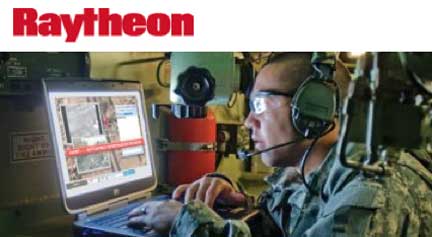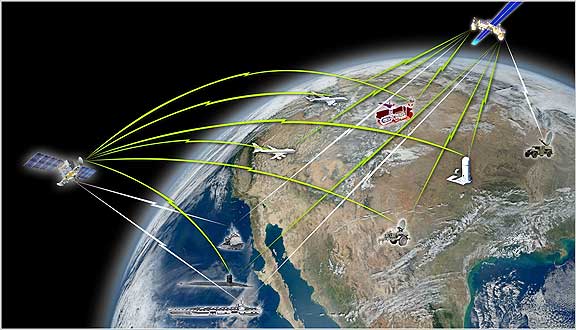 [SatNews] Raytheon Company (NYSE: RTN) has announced a fall release of its...
[SatNews] Raytheon Company (NYSE: RTN) has announced a fall release of its...
...Raytheon Advanced Tactical System 2.0, which leverages the Google Android™ mobile platform to bring intelligence, surveillance and reconnaissance (ISR) data to the warfighter. The 2.0 release will provide enhanced capabilities with interactive communications providing secure situational awareness, full motion video, buddy tracking and secure chat features.
Raytheon Advanced Tactical System, launched in April 2009, delivers multimedia content faster, in less time to warfighters and provides a common mobile device for tactical situations. Field trials for the 2.0 release were completed in April 2012. The Raytheon Advanced Tactical System 2.0 enhancements include:
- A secure Android-based Real-Time Situational Awareness (RTSA) solution supporting warfighters to the tactical edge, search and rescue, law enforcement and special operations missions
- Multimode and multimedia interactive communication for intelligence and information collaboration that operates on the latest Android 4.0 operating system for both handhelds and tablets
- Bi-directional network database access through Raytheon's THUNDR product, providing access to DCGS and comparable data sources
- Portable, light-weight and feature-rich capabilities that include FIPS 140-2 encryption compliance, full motion video, buddy tracking, secure chat with attachments, status, incident and situation reports and more
- Multiple communications paths via 3G, WiFi and other tactical military radios
The Raytheon Advanced Tactical System device disseminates vital intelligence data via the DCGS Intelligence Backbone (DIB) architecture system. Information is shared instantly and securely on the DIB and is searchable to mobile device users and other DIB users. Raytheon has demonstrated how the device provides the warfighter the ability to make decisions in seconds and minutes, rather than hours.
Raytheon Company has also connected 37 different types of radios from U.S. military and coalition partners on its vehicular soldier radio system...
...while providing a robust and integrated backbone for on-the-move tactical communications. The system, featuring Raytheon's Next Generation Mobile Ad hoc Network Waveform (NMW), will be tested at the next phase of the U.S. Army's Network Integration Evaluation (NIE) in both lab and field environments this fall. Raytheon's Mobile Ad hoc Interoperability Network Gateway (MAINGATE) radio, with an industry leading 10 megabits per second capacity and 128-node scalability, allows for timely and reliable interoperability with coalition partners for sharing voice, text and full-motion video across the battlefield. The unmatched 10 megabits per second capacity allows soldiers to view at least 27 videos at the same time.
MAINGATE with NMW will be tested as part of the NIE 13.1 Coalition/Joint Participation at Aberdeen Proving Ground, Maryland, and White Sands Missile Range, New Mexico. MAINGATE has been deployed in theater for two years, enabling interoperability with coalition partners. NMW has recently been provided to the U.S. Department of Defense's Joint Tactical Radio System library, strengthening Raytheon's position as a provider of wideband Ground Mobile Radio solutions.
Raytheon Company is also competing for an alternate U.S. Air Force satellite terminal program and has currently produced...
...three Advanced Extremely High Frequency (AEHF) military terminals that already meet 80 percent of the Air Force's requirements. Raytheon submitted a proposal to the Air Force in June for the Family of Advanced Beyond Line of Sight Terminals (FAB-T) alternate program, which will provide secure, anti-jam, communications for the U.S. president and senior military advisers.

All three of Raytheon's AEHF terminals have passed production acquisition milestone decisions and successfully tested with the on-orbit AEHF satellite. They demonstrated interoperable communications using the satellite's Extended Data Rate (XDR) waveform, one of the military's most complex, low probability-detect, anti-jam waveforms. It moves data more than five times faster than legacy EHF systems. Raytheon's U.S. Army, Navy and Air Force terminals currently support military operations on Milstar satellites, and are deployed and ready to operate with the newest AEHF satellites as soon as they are operational.


